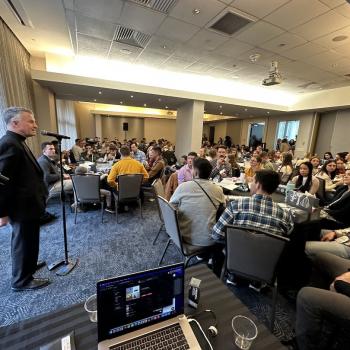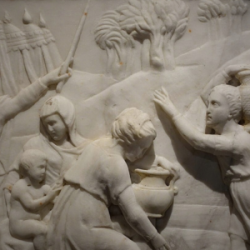One of the first examples of New Media emerged around the turn of the millennium. Blogs—short for "web logs"—were introduced as websites featuring regularly updated entries. In contrast to traditional sites, blogs allowed readers to interact with the original author, forming the social backbone of the digital revolution.
Blogs helped spark the first social network, Friendster, which debuted in 2002. Friendster gathered real-world friends into an online community and became popular fast: in its first three months, the site gained three million users. Friendster was followed a year later by MySpace, which competed with Friendster but sported a more youth-friendly culture.
In 2004, a new social networking site was launched by students at Harvard University as a way to connect U.S. college students.6 Facebook, as it was eventually branded, had an appealing exclusivity—you had to have a college email address to join. This made it especially popular among young adults, who didn't want to mingle online with parents or children. The site gained over 200 million users in its first eight months, eventually opening itself up to the world.7
YouTube was the next major New Media creation. Produced in 2005 and now owned by search-engine giant Google, YouTube is the most popular online video destination. The site receives over two billion views per day, nearly double the prime-time audience of all three major television networks combined.8
One year after YouTube, the micro-blogging service Twitter was introduced, inviting users to share "tweets" of 140 characters or less. The site now has over 190 million users who generate 65 million new tweets each day.9
The statistics surrounding these and other New Media tools simply boggle the mind:
The average American spends 66 hours per month on a computer outside of work.10 While pornography had once been the dominant Internet activity, social media has now taken the top slot.11
Facebook, the Internet's most popular website,12 has over 500 million users, half of whom log in every single day. If Facebook were a country, it would be the world's third largest, behind only China and India.13 Facebook users spend over 700 billion minutes each month on the site, sharing over 30 billion pieces of content.14
YouTube visitors watch over two billion videos every day. Every minute, 24 hours of new video are uploaded to the site.15
Singers Lady Gaga, Justin Bieber, and Britney Spears each have over 6.5 million Twitter followers.16 Any message they "tweet" will instantly reach millions of people in a matter of seconds.
The Internet features over 200 million blogs, according to conservative estimates.17 More than 75 percent of Internet users regularly read blogs.18
Almost half of Americans have listened to a podcast, while two-thirds of those people have listened in their car.19
Seventy-two percent of Americans—including 87 percent of teens—communicate through text messaging.20 Last year alone, Americans sent 1.8 trillion text messages.21
Existing in a world that has dramatically embraced New Media, the Church finds herself at a crossroads. This is the new habitat for the majority of Christians.
The question is, will the Church take up residence too?
The Digital Continent
At the 43rd World Communications Day, Pope Benedict XVI encouraged Catholics to boldly enter the "digital continent. " Despite being over 80 years old, Benedict keenly recognizes this digital world for what it is: a ripe mission field for the Church.
Many individuals have already staked claim to chunks of this online land, establishing rich hubs of evangelization and formation. Others have built welcoming communities that are expanding every day. And some have harnessed the power of New Media to serve the common good.
Throughout this book, you'll find contributions and highlights from many New Media pioneers, guides who are navigating the Church through uncharted digital waters. The book is divided into four sections, each emphasizing one of the Church's main online missions.
The first section covers New Media and evangelization. Father Robert Barron explains how he uses New Media to engage the secular online world—including its "new atheists"—while answering what he deems the "YouTube heresies. " Jennifer Fulwiler recounts how she blogged her way from atheism to Catholicism. And Marcel LeJeune, a college campus minister at Texas A&M University, describes how New Media connects young adults to the Church.
In the second section, which covers New Media and formation, you'll learn how these tools can form and strengthen one's faith. Mark Shea explores the beauties and dangers of Christian blogging, while Taylor Marshall discusses how New Media can unwrap ancient truths. Father Dwight Longenecker then describes how he uses his blog to dialogue with people from other Christian traditions.




